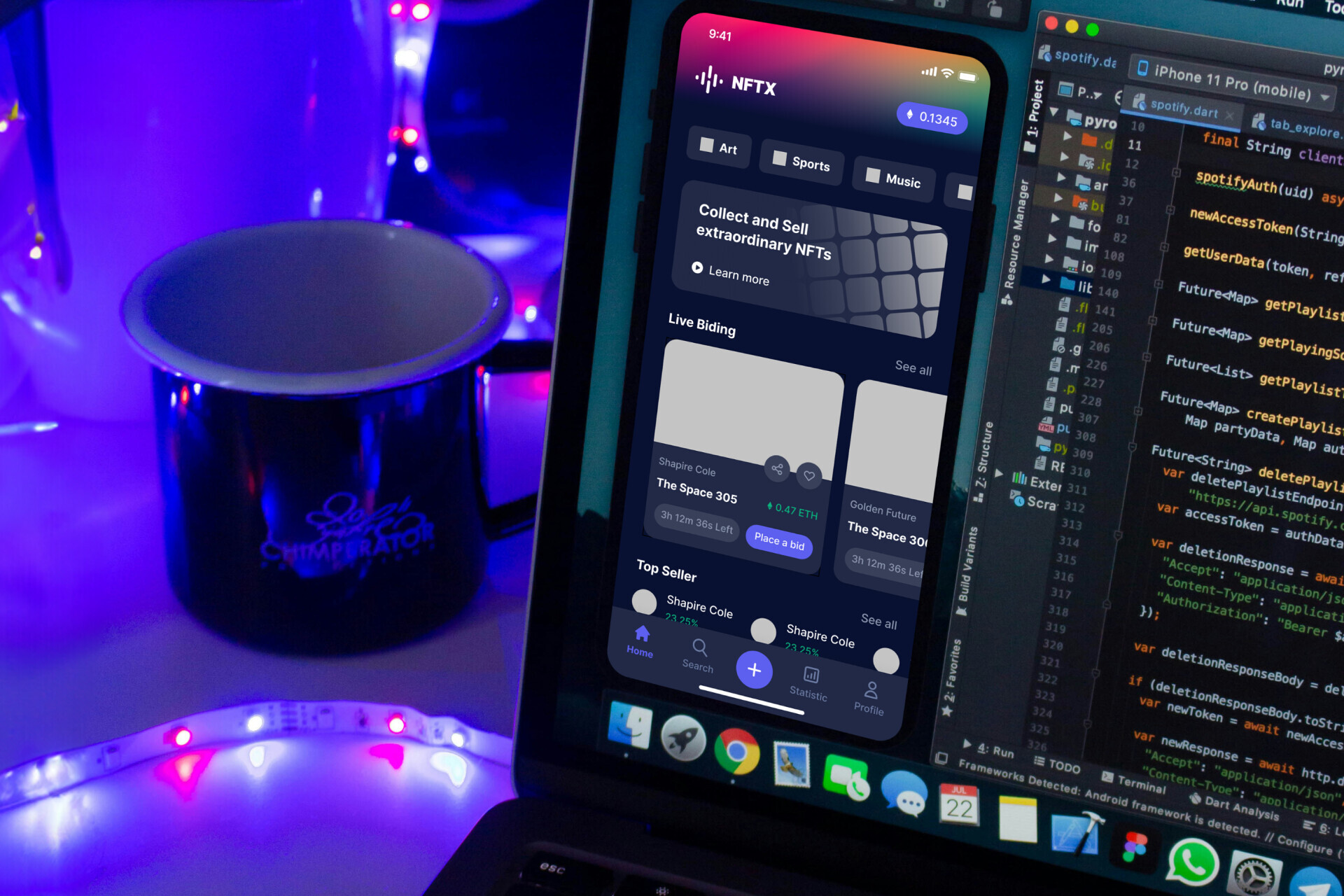In today’s digital age, a shocking 90% of mobile apps are abandoned after just 30 days. Behind this striking statistic lies a key factor: the lack of ongoing app maintenance and support. Ignoring the upkeep of your digital product is like letting a finely tuned engine gather rust.
This article is your guide to understanding the critical role of app maintenance and support in reversing this trend, ensuring your app remains relevant, functional, and engaging.
Here’s a sneak peek at what we’ll dive into:
- Understanding what app maintenance and support entails.
- 13 reasons why you should adopt app maintenance and support
- The strategic importance for business continuity, enhancing customer loyalty, ensuring security, and more.
- Future trends in maintenance and support, including the role of predictive analytics.
- How to choose the right maintenance and support partner for your needs.
What is App Maintenance and Support?
App maintenance and support refers to ongoing services to keep a software application running smoothly and efficiently post-deployment. These services often include bug fixes, performance enhancements, and security updates. Effective maintenance ensures the app remains functional and relevant, adapting to new technologies and user feedback.
However, the complexity and scope of maintenance can vary based on the app’s architecture and user demands, raising questions about the best strategies and practices for long-term support.
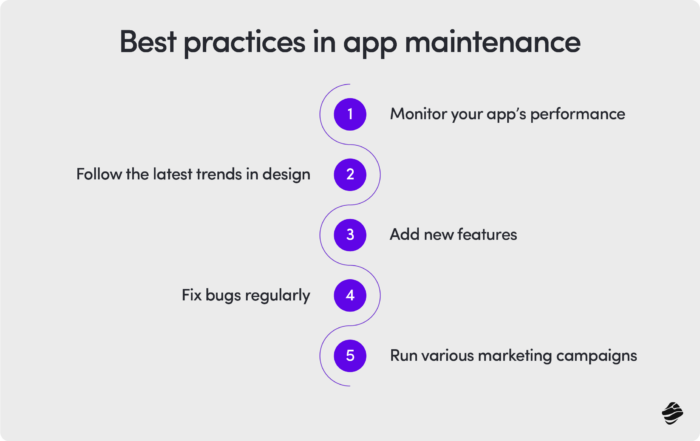
Why it’s non-negotiable?
- Rapid technological evolution: In a world where technology shifts at breakneck speed, a static app is doomed to be left in the dust. Regular maintenance and support span from minor adjustments to significant overhauls, all designed to ensure optimal application performance, usability, and security.
- Compatibility is key: It’s crucial to ensure your app runs smoothly with the latest devices and operating systems, extending its life and relevance.
The support side of things
- Beyond maintenance: While maintenance keeps the app in tip-top shape, support focuses on the user experience—addressing queries, solving issues, and providing timely help.
- Turning users into advocates: Effective support transforms satisfied users into vocal advocates, fostering loyalty and sparking word-of-mouth promotion.
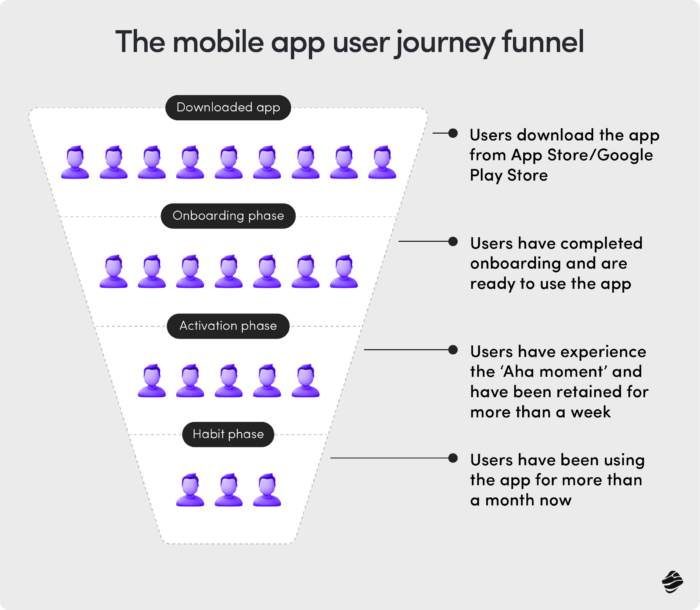
A continuous cycle of improvement
App maintenance and support is an ongoing cycle crucial for the app’s success, not just a one-off task. This dynamic process includes:
- Monitoring app performance: Regularly check your app’s performance using tools like Google Analytics for mobile or Firebase. For example, tracking load times can identify areas needing optimization.
- Gathering user feedback: Utilize surveys or in-app feedback tools like UserVoice to understand user needs. For instance, a common request in user feedback might be the need for an additional feature.
- Implementing changes: Continuously update your app to meet evolving user needs and keep up with technological advancements. This could involve introducing new features or refining the user interface.
ConsidA proactive strategy is essential since most app users uninstall because of technical issues. Therefore, to ensure your app doesn’t just survive but thrives, regular updates, responding to user feedback, and adapting to new technologies are key.
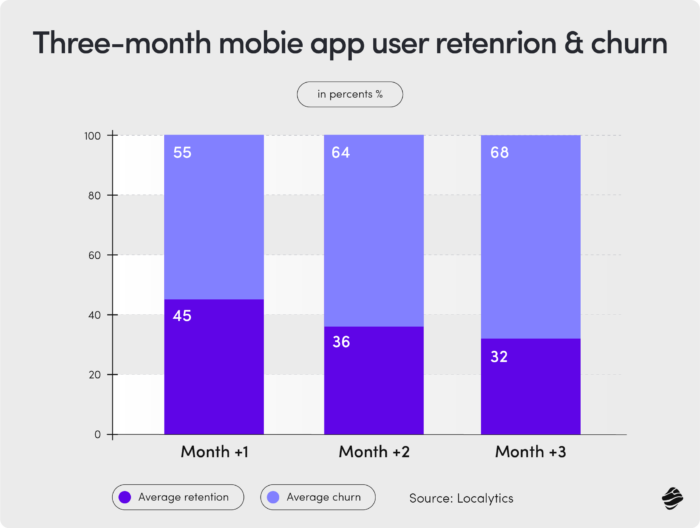
Consider implementing a regular schedule for updates and reviews – this not only enhances functionality but also signals to users that you’re committed to providing a high-quality experience.
Investing in the future
Investing in the future through app maintenance and support is a strategic decision, demonstrating a commitment to long-term excellence. It’s more than just fixing bugs; it’s about evolving and growing with your users. This commitment sends a powerful message about your dedication to quality:
- Anticipate future needs: Regularly updating your app not only addresses current issues but also anticipates future needs. For instance, adapting to the latest OS updates or integrating cutting-edge technologies like AI can keep your app at the forefront of innovation.
- User retention: A well-maintained app reduces customer turnover and improves the retention rate. Regular improvements and fixes show users that their feedback is valued and their experience is a priority.
- Competitive edge: In a crowded marketplace, an app with frequent updates and active support stands out. This approach helps maintain a competitive edge by continually adapting to market trends and user preferences.
Investing in your app’s maintenance and support is investing in its longevity and relevance. It’s not just about maintaining functionality; it’s about enhancing the user experience, staying ahead of competitors, and securing a place in the dynamic digital future.
Here Are 13 Reasons to Adopt App Maintenance and Support
In the digital age, your app is more than a tool; it’s a vital part of your business strategy. Regular maintenance and support are not just tasks on a checklist; they’re investments in your app’s future and, by extension, your business’s success. Here are thirteen compelling reasons that highlight the importance of this ongoing commitment.
1. Strategic app maintenance for business continuity
Business continuity is a term that often conjures images of disaster recovery plans and backup servers. However, in the context of digital products, continuity is about ensuring your app remains functional, accessible, and relevant at all times.
Here’s why application maintenance is a cornerstone of this concept:
- Safeguards revenue: For many businesses, their app isn’t just a digital presence; it’s a crucial revenue stream. A well-maintained app ensures that this stream flows uninterrupted.
- Take, for example, a mobile e-commerce platform. Regular updates and bug fixes can enhance the shopping experience, directly influencing sales.
- Incorporating A/B testing tools like Optimizely can also help you refine user experiences to boost conversion rates, directly impacting your bottom line.
- Adapts to change: The digital landscape is ever-evolving, with new operating system updates and changing user behaviors. Maintenance ensures your app remains compatible and relevant.
- For instance, when Apple released iOS 14, it introduced significant privacy changes that affected how apps track user behavior. Apps that quickly adapted to these changes by updating their privacy policies and functionalities could maintain a seamless user experience, thereby retaining their user base.
- Boosts reliability: A consistently maintained app builds user trust. Users depend on your app for services, information, or entertainment, and they need to know it’s reliable.
- For example, a banking app that regularly updates its security features reassures users that their financial information is safe, fostering trust and long-term loyalty.
- Tools like Sentry or Crashlytics can help you monitor app stability and quickly address any issues, ensuring your app remains a reliable resource for your users.
- Real-life application of strategic app maintenance for continuity
- Skyscanner, in partnership with Miquido, upgraded their basic mobile app into a leading platform using Java and Objective-C, adding new features like maps and improved search. This revamp tackled issues such as poor user engagement and low conversion rates, resulting in significant user base expansion from 1 million to 100 million.
- Microsoft: Known for continuously updating its software, including Office 365 and Windows, Microsoft focuses on regular improvements and security updates to maintain business continuity and user satisfaction.
- Google: Google’s various applications, like Google Maps and Gmail, undergo constant updates. They frequently add new features and enhance user experience to keep their services at the forefront of the market.
These projects underscore the critical role of continuous application maintenance services and adaptation to evolving consumer needs in ensuring business growth and sustainability in the digital landscape.
When developing a mobile app with Miquido, you get end-to-end product development. This includes all stages from research and development, consulting, design, and, most importantly, maintenance. Our work does not end with the launch of your app!
2. Minimizing downtime to boost revenue
Downtime is more than just a technical glitch; it directly threatens your bottom line.
Small businesses might lose between $137 to $427 every minute they’re not working. Big companies could lose more than $16,000 per minute.
For example,
- Apple once lost about $25 million when their services were down for 12 hours.
- Facebook lost close to $90 million from a 14-hour stoppage.
- Delta Airlines lost around $150 million from being down for five hours.
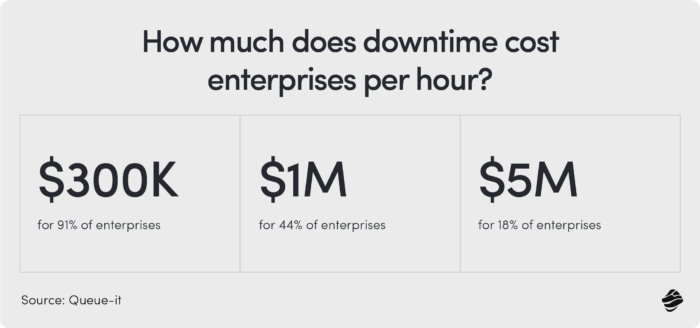
Your numbers may not be as big as these, but it shows that every moment your app is not functioning as intended, it’s a missed opportunity for engagement, transactions, and building trust with your users.
Here’s why minimizing downtime is crucial:
- Immediate revenue loss: For apps facilitating transactions or serving as e-commerce platforms, downtime directly equals lost sales. Imagine your app is down during a peak shopping hour; the lost revenue isn’t just about a single transaction but potentially hundreds or thousands, depending on your user base size.
- Long-term brand damage: Beyond the immediate financial impact, frequent or prolonged outages can erode trust in your brand. Users are likely to share their negative experiences on social media, further amplifying the damage. A study found that 80% of users delete an app due to poor performance, highlighting the importance of reliability.
- User experience disruption: In today’s digital marketplace, users expect seamless and uninterrupted service. Alternatives are readily available, and downtime can push users towards your competitors. Maintaining a proactive maintenance schedule ensures that your app remains the preferred choice.
- Search engine ranking impact: For web apps, significant downtime can hurt your SEO efforts. Search engines prioritize the user experience, and frequent downtime can lead to lower rankings, making it harder for new users to discover your app.
- Real-life application of minimizing downtime to boost revenue:
- Amazon: Known for its efficient use of cloud computing through Amazon Web Services (AWS), Amazon minimizes downtime in its operations, particularly on high-traffic events like Black Friday and Cyber Monday. This maximizes sales and customer experience.
- Google: With highly reliable services like Google Search and Gmail, Google employs advanced data management and server technologies to keep downtime to a bare minimum. This reliability is crucial for their ad revenue and user trust.
- Netflix: As a streaming giant, Netflix has developed a resilient cloud-based infrastructure that allows for seamless streaming with minimal interruptions. This enhances customer satisfaction and reduces churn, directly impacting revenue.
By prioritizing app maintenance services, you’re not just fixing bugs; you’re actively protecting your app’s ability to generate revenue and maintain its reputation in a competitive marketplace.
3. Building customer loyalty via continuous app improvements
In the digital marketplace, customer loyalty is gold, and continuous app improvement is the mine. A staggering 65% of a company’s business comes from existing customers, according to the book “Marketing Metrics.” This statistic highlights the immense value of retaining customers through enhancing their app experience.
Here’s how continuous improvement plays a pivotal role:
- Personalization at its best: Tailoring the user experience based on individual preferences and behaviors keeps users coming back.
- For instance, Netflix’s recommendation engine, powered by sophisticated algorithms, suggests content based on past viewing habits, significantly enhancing user satisfaction and stickiness.
- Feedback loop: Actively seeking and promptly acting on user feedback demonstrates that you value their input, fostering a sense of community and loyalty.
- Tools like Qualtrics or SurveyMonkey can facilitate this process, allowing you to gather actionable insights and make informed improvements.
- Feature updates: Regularly introducing new features in response to user demand or ahead-of-market trends keeps your app fresh and engaging.
- A notable example is how Instagram continuously evolves, adding features like Stories and Reels to keep users engaged and deter them from switching to competitors.
- Quality assurance: Ensuring your app is free from bugs and performs smoothly across all devices and platforms is non-negotiable.
- Implementing robust QA processes and tools like TestFlight for iOS apps or Google Play Beta Testing for Android apps can help maintain a high-quality user experience, reducing frustration and churn.
- Real-life application of building customer loyalty via continuous app improvements
- Apple: Apple’s iOS updates regularly introduce new features and improvements, enhancing user experience and security on iPhones and iPads. This consistent improvement helps retain users within the Apple ecosystem.
- Spotify: Spotify frequently updates its app with new features, personalized playlists, and improved user interfaces. These enhancements keep the platform fresh and engaging, fostering loyalty among its user base.
- Airbnb: Airbnb consistently enhances its app with features that improve usability and add new services, like Experiences. Such improvements make the platform more appealing and convenient, encouraging users to return.
Pro tips for enhancing customer loyalty:
- Utilize analytics: Tools like Google Analytics for mobile apps can provide deep insights into user behavior, helping you identify what works and what doesn’t. This data is invaluable for guiding your continuous improvement efforts.
- Embrace AI and ML: Artificial Intelligence and Machine Learning can transform how you interact with users. From personalized content to predictive customer service, these technologies can significantly enhance the user experience, driving loyalty.
- Community building: Encourage user interaction within your app through forums, feedback sections, or social features. This improves the user experience and builds a community around your app, increasing user attachment and loyalty.
- Reward loyalty: Implementing a rewards program or offering exclusive content can be a powerful incentive for users to stay engaged with your app. Gamification elements can also add a fun layer to the user experience, encouraging continued use.
By prioritizing continuous improvement, you meet the evolving needs of your users and also build a loyal customer base that is less likely to turn to competitors. This approach enhances user satisfaction, improves your conversion rate, and solidifies your app’s position in the competitive digital landscape.
4. Enhancing app security with regular maintenance
In an era where data breaches are all too common, prioritizing cybersecurity through regular app maintenance isn’t just advisable; it’s imperative. A recent report by IBM found that the average cost of a data breach is now over $4 million, underscoring the financial and reputational stakes involved.
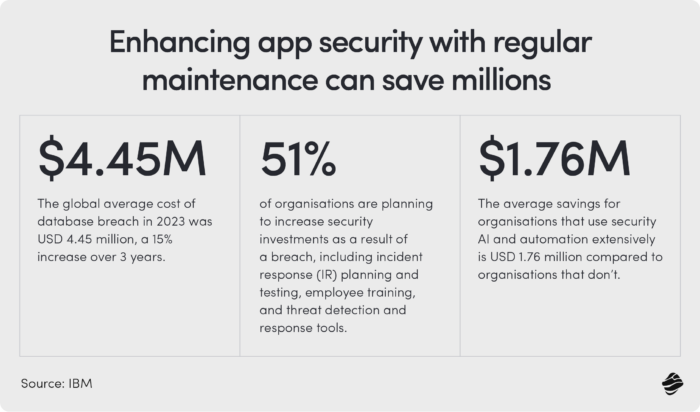
Here’s why security should be at the forefront of your maintenance strategy:
- Up-to-date protection: Regular updates ensure your app incorporates the latest security measures against new threats. Just as a vaccine evolves to combat new strains of a virus, your app’s security protocols must adapt to counteract emerging cyber threats.
- Trust is paramount: Users entrust their personal and financial information to your app. A breach can irreparably damage this trust, leading to user attrition and long-term brand damage. Regular security audits and updates reinforce user confidence in your app’s safety.
- Regulatory compliance: Many apps are subject to regulations like GDPR in Europe or CCPA in California, which mandate stringent data protection standards. Ongoing maintenance ensures compliance, avoiding hefty fines and legal complications.
- Real-life application of enhancing app security with regular maintenance
- PayPal: As a leading online payment system, PayPal places a high emphasis on security. They regularly update their app to address potential vulnerabilities, implement new security features, and ensure compliance with financial regulations.
- Microsoft: Through regular updates to its software products, including Office 365 and its Windows operating systems, Microsoft continually enhances security features to protect against emerging threats and vulnerabilities.
- GOmobile for BNP Paribas: The GOmobile app project for BNP Paribas, handled by Miquido, faced strict banking rules and technical limitations. Our solution was to build secure, independent modules for both Android and iOS, tested thoroughly for safety.
Some security measures:
- Implement SSL/TLS: Secure Socket Layer (SSL) and Transport Layer Security (TLS) encryption should be non-negotiable for any app handling sensitive information, ensuring data is encrypted in transit.
- Regular penetration testing: Employ services like HackerOne or engage cybersecurity experts to conduct penetration testing, identifying vulnerabilities before they can be exploited.
- Stay informed on compliance: Use tools like OneTrust to stay updated on regulatory changes and ensure your app remains compliant with data protection laws worldwide.
5. Adopting a proactive app maintenance strategy
Shifting from a reactive to a proactive maintenance approach can significantly enhance your app’s performance, security, and user satisfaction. A proactive app maintenance strategy anticipates potential issues and addresses them before they impact users, rather than scrambling to fix problems after they arise.
Here’s how adopting this approach benefits your app:
- Preventative care: Regularly scheduled maintenance identifies and resolves small issues before they escalate into bigger problems, much like routine health check-ups prevent serious illnesses.
- Cost efficiency: Addressing issues proactively is often less expensive than fixing them after they’ve caused damage or downtime. Preventative maintenance reduces the need for emergency interventions, which can be costly and resource-intensive.
- User experience: A proactive approach minimizes disruptions to the user experience by ensuring that the app operates smoothly and reliably. This consistency is key to retaining users and encouraging engagement.
- Real-life application of adopting a proactive app maintenance strategy
- Slack: Slack regularly updates its communication platform to enhance features, fix bugs, and improve user experience. Their proactive approach to maintenance keeps the app efficient and popular among users.
- Trello: Known for its project management tools, Trello frequently rolls out updates that improve functionality and user interface, ensuring the app remains a top choice for productivity and collaboration.
- Instagram: Instagram constantly updates its app with new features like Reels, Stories, and various interactive tools to stay ahead in the competitive social media landscape, demonstrating proactive maintenance and innovation.
Pro tips for proactive maintenance:
- Automated monitoring tools: Utilize tools like New Relic or AppDynamics for your app’s performance monitoring and health in real-time, allowing you to address issues proactively.
- Feature fags: Implement feature flags using platforms like LaunchDarkly to roll out new features gradually. This allows you to test and adjust new functionalities with a subset of users before a full launch, minimizing potential disruptions.
- Regular update schedule: Establish and adhere to a regular schedule for updates and maintenance. Communicate these updates to users well in advance to manage expectations and minimize inconvenience.
By prioritizing security and adopting a proactive approach to maintenance application support services, you safeguard your app against threats and disruptions and build a foundation of trust and reliability with your users, contributing to long-term success and sustainability.
6. Keep pace with tech trends in app development
In the fast-paced world of customer app development, staying abreast of emerging trends and technologies is not just beneficial—it’s essential for survival. The digital landscape is constantly evolving, with new technologies reshaping user expectations and possibilities.
Here’s why keeping up with these changes is crucial:
- Innovative user experiences: Technologies like AR (Augmented Reality) and VR (Virtual Reality) are setting new standards for immersive user experiences. Enterprise apps that leverage these technologies can offer unique value, distinguishing themselves from competitors.
- Efficiency and scalability: Cloud computing and serverless architectures offer apps the ability to scale seamlessly with demand, ensuring efficient operation without the overhead of managing physical servers.
- Enhanced personalization: AI and machine learning enable apps to offer personalized experiences at scale, learning from user interactions to tailor content, recommendations, and functionalities.
- Real-life application of keeping pace with technical trends in app development
- Tesla: Tesla’s app, used for controlling their electric vehicles, regularly updates with the latest in software technology, enhancing features like remote control, energy monitoring, and vehicle diagnostics.
- Spotify: Spotify stays ahead by continually integrating new technologies, such as AI-driven music recommendations, and high-quality audio streaming, ensuring a superior user experience.
- Uber: Uber’s app leverages cutting-edge technology, such as AI for ride matching and route optimization, and experiments with concepts like autonomous vehicles, positioning itself at the forefront of transportation technology.
Embracing innovation:
- Continuous learning: Encourage your team to stay informed about the latest industry trends and technologies through webinars, conferences, and online courses.
- Strategic partnerships: Collaborate with technology providers and innovation labs to experiment with new features and capabilities in your app, even if on a small scale initially.
By integrating emerging trends and technologies into your mobile application maintenance strategy, you future-proof your app and open up new avenues for engagement and growth. This proactive approach ensures your app remains relevant and continues to meet the evolving needs of your users.
7. Strengthening data protection in app maintenance
In today’s digital ecosystem, where data breaches are becoming more frequent and sophisticated, enhancing data security measures through regular app maintenance is not just a recommendation; it’s a necessity. Here’s why prioritizing security is paramount:
- Building trust: Users expect their data to be handled with the utmost care. By implementing the latest security protocols and regularly updating them, you reassure users that their information is safe, fostering trust and loyalty.
- Compliance with regulations: With regulations like GDPR and CCPA setting strict guidelines for data protection, maintaining compliance is crucial. Regular updates ensure your app meets these legal requirements, avoiding potential fines and legal issues.
- Mitigating risks: Proactive security measures can identify vulnerabilities before they are exploited by attackers, significantly reducing the risk of data breaches and their associated costs.
- Real-life application of strengthening data protection in app maintenance
- WhatsApp: Owned by Facebook, WhatsApp often updates its app to maintain its end-to-end encryption and introduce new security features, ensuring users’ messages and calls are securely protected.
- NordVPN: As a VPN service provider, NordVPN continually updates its app with advanced security features to protect user data and maintain privacy while browsing the internet.
- Zoom: After facing security challenges, Zoom significantly stepped up its data protection efforts, regularly updating its app with enhanced encryption and security features to protect user meetings and data.
Strengthening your app’s security:
- Regular security audits: Conducting periodic security audits can uncover potential vulnerabilities, allowing you to address them promptly.
- Encryption: Implementing end-to-end encryption for data transmission ensures that user data remains secure, even if intercepted.
- Two-factor authentication (2FA): Adding an extra layer of security through 2FA can significantly reduce the risk of unauthorized access.
By continuously enhancing your app’s security measures, you protect your users’ data and build a strong foundation of trust that is critical for long-term success.
8. Driving innovation through user feedback
Innovation is the lifeblood of any successful app, and continuous feedback from users is a goldmine of insights for driving this innovation. Here’s why embracing user feedback is crucial:
- User-centric development: Feedback provides direct insights into user needs and pain points, allowing you to tailor your development efforts to address these areas effectively.
- Early detection of issues: Users often uncover issues that may not have been identified during testing. Early detection through feedback allows for quicker resolutions, enhancing overall user satisfaction.
- Engagement and retention: Actively soliciting and responding to feedback shows users that their opinions are valued, increasing engagement and loyalty.
- Real-life application of driving innovation through user feedback
- Duolingo: Duolingo often updates its language learning platform based on user feedback, continuously adding new languages and features to improve the learning experience.
- Adobe: Adobe frequently updates its Creative Cloud suite of products based on user feedback, focusing on improving usability, adding new creative tools, and enhancing performance.
- Reddit: Reddit’s platform and policy updates are often influenced by its community feedback. The company uses user suggestions to make changes that improve the user experience and content moderation.
Leveraging user feedback for innovation:
- Feedback channels: Implementing multiple channels for feedback, such as in-app surveys, social media, and support tickets, makes it easy for users to share their thoughts and suggestions.
- Data analysis: Utilizing tools to analyze feedback can help identify common themes and priorities for development, ensuring that your innovation efforts are aligned with user expectations.
Embracing continuous feedback fuels innovation and ensures that your existing software applications evolve in a way that meets and exceeds user expectations, keeping them at the forefront of the market.
9. Maximizing compatibility across devices and platforms
As the number of devices and operating systems continues to grow, ensuring your app remains compatible across all platforms and devices is crucial. Here’s why compatibility is key:
- Broad reach: Compatibility ensures that more users, regardless of their device or operating system, can access and enjoy your app, expanding your potential user base.
- User satisfaction: Users expect a seamless experience on any device they choose. Maintaining compatibility prevents issues like layout glitches or functionality bugs, enhancing overall satisfaction.
- Competitive edge: An app that works flawlessly across a wide range of devices and platforms has a significant advantage in today’s diverse tech landscape.
- Real-life application of maximizing compatibility across devices and platforms
- Dropbox: Dropbox provides cloud storage solutions that work seamlessly across Windows, macOS, iOS, and Android, making file sharing and collaboration easy across different devices.
- Slack: Slack is designed to function consistently on desktop and mobile platforms, ensuring effective communication and collaboration for teams, regardless of the device they use.
- Zoom: Zoom has become a ubiquitous tool for video conferencing, thanks to its compatibility with various platforms and devices, making it accessible for a wide range of users.
Strategies for ensuring compatibility:
- Responsive design: Implementing a responsive design ensures your app looks and functions well on any screen size or device.
- Regular testing: Conducting regular testing on new devices and OS versions helps identify and rectify compatibility issues promptly.
10. Cutting costs with preventative app maintenance
Investing in preventative software maintenance can significantly reduce long-term costs associated with your app. Here’s how:
- Avoiding major repairs: Regular maintenance can prevent small issues from becoming big, costly problems.
- Extending app lifespan: By keeping your app updated and in good working order, you extend its useful life, delaying the need for a costly overhaul or rebuild.
- Efficiency gains: A well-maintained app requires less time and resources to manage, freeing up your team to focus on innovation and growth.
- Real-life application of cutting costs with preventative app maintenance
- IBM: IBM focuses on preventative maintenance in its software and services. By using predictive analytics and AI, IBM identifies potential issues in its systems early, reducing the need for costly repairs and downtime.
- SAP: SAP, known for its enterprise resource planning software, employs preventative maintenance strategies to ensure its systems run smoothly, helping businesses avoid expensive disruptions and inefficiencies.
- Microsoft: With its Azure cloud platform and other software solutions, Microsoft invests in preventative maintenance to minimize disruptions and maintain service integrity, ultimately reducing costs associated with downtime.
Cost-effective maintenance practices:
- Automated testing: Utilize automated testing tools to efficiently identify issues before they affect users.
- Maintenance schedule: Create a regular maintenance schedule to ensure all aspects of your app are reviewed and updated systematically.
Pro Tip: One of the best cost-cutting approaches would be partnering with an app development firm that offers continuous improvements and maintenance. At Miquido, we believe that creating a digital product is a long-term relationship that requires constant maintenance, upgrading, and support. So, make sure you choose a supportive partner for your app’s growth!
11. Enhancing app performance and speed
Users have high expectations for app performance and speed, and regular maintenance is key to meeting these expectations. Here’s why performance matters:
- User retention: Slow or poorly performing apps lead to frustration and app abandonment.
- SEO ranking: For web apps, performance impacts SEO rankings, with faster apps ranking higher in search results.
- Conversion rates: Apps that perform well convert better, as users are more likely to complete actions without delays or issues.
- Real-life application of enhancing app performance and speed
- Netflix: Netflix focuses on optimizing streaming performance, ensuring fast load times and smooth playback, which is key to maintaining its position as a leading streaming service.
- Spotify: Spotify regularly updates its music streaming app for quick song loading and seamless playback, even with large libraries or under varying network conditions.
- Adobe: Adobe optimizes its Creative Cloud apps, like Photoshop and Premiere Pro, for speed and performance, crucial for professionals working on complex projects.
Enhancing performance:
- Optimize code: With code refactoring and code review process, regularly review and optimize your app’s code to eliminate bloat and improve efficiency.
- Content delivery networks (CDNs): Use CDNs to speed up content delivery, especially for media-rich apps.
12. Gaining a competitive edge with regular updates
In the rapidly evolving app market, staying ahead of the competition requires constant improvement and adaptation. Regular maintenance and user support are critical for:
- Innovating: Continuously updating your app with new features and improvements keep it fresh and engaging.
- Adapting to market changes: Regular maintenance allows you to quickly adapt to market changes and user feedback, keeping your app relevant.
- Differentiating: By regularly enhancing your app, you can offer unique features and functionalities that set you apart from competitors.
- Real-life application of gaining a competitive edge with regular updates
- Netflix: Netflix constantly updates its streaming service with new content, algorithm improvements, and user interface enhancements, keeping it competitive in the streaming industry.
- Spotify: Regular updates with new features, personalized playlists, and performance improvements help Spotify stay ahead in the competitive music streaming market.
- Zoom: Zoom’s frequent updates, especially in response to user feedback and security needs, have helped it stay ahead in the video conferencing market, especially during the heightened demand for remote communication tools.
Staying ahead:
- Market research: Keep an eye on industry trends and competitor updates to inform your maintenance strategy.
- You can use real-time social media competitive analysis that allows you to monitor social engagement metrics, brand mentions, common search terms, and phrases.
- Utilize direct research methods such as surveys, questionnaires, focus groups, and in-depth interviews that allow you to gather nuanced insights directly from your target audience.
- User engagement: Engage with your users through updates and new features to keep them interested and loyal.
13. Improving user experience with regular updates
The user experience (UX) is the cornerstone of a successful app, and regular updates play a pivotal role in ensuring that the experience remains top-notch. Making a positive experience last beyond the first-time user experience is absolutely crucial. Here’s why the continuous improvement of UX is indispensable:
- Meeting evolving expectations: User expectations are not static; they evolve as technology advances. Regular updates allow your app to meet and exceed these changing demands, keeping users satisfied and engaged.
- Fixing usability issues: Over time, certain features or design elements may not perform as expected. Regular maintenance provides the opportunity to refine these aspects, enhancing usability and accessibility.
- Introducing new features: Users love discovering new functionalities that add value to their app experience. Regular updates keep the app feeling fresh and exciting, encouraging continued use.
- Real-life application of improving user experience with regular updates
- Adobe: Adobe’s Creative Cloud apps, including Photoshop and Illustrator, receive frequent updates for improved functionality, new creative tools, and a more intuitive user interface, catering to the evolving needs of creative professionals.
- Microsoft: Microsoft’s updates to Windows and Office 365 often focus on user interface improvements, new features, and enhanced collaboration tools, improving the overall user experience for both personal and business users.
- Airbnb: Airbnb constantly enhances its app and website with better search functionality, user-friendly design, and personalized recommendations, making the process of booking accommodations more seamless and enjoyable.
Enhancing UX through updates:
- User testing: Conduct user testing sessions for new updates before rolling them out widely. This can help identify any UX issues or areas for improvement.
- Feedback mechanisms: Implement in-app feedback mechanisms to gather real-time insights from users about their experience and what they’d like to see improved or added.
- A/B testing: Use A/B testing for new features or design changes to determine which variations deliver the best user experience.
By prioritizing regular updates focused on enhancing UX, you retain existing users and attract new ones. An app that continually evolves in response to user feedback and changing trends stands out in a crowded marketplace, driving growth and success.
The Risks and Consequences of Neglecting Application Maintenance
Neglecting application maintenance can lead to a cascade of issues, impacting not just the operational aspects of your app but also its security posture and overall reputation. Understanding these risks is crucial for any business aiming to thrive in the digital landscape.
Operational damages
- Downtime and performance issues: Without regular updates and bug fixes, your app is more likely to suffer from downtime or performance issues, frustrating users and potentially driving them away.
- Incompatibility with new technologies: Failing to update your app can lead to incompatibilities with new operating systems and devices, limiting your app’s accessibility and functionality.
Security vulnerabilities
- Increased Risk of data breaches: Regular maintenance includes critical security updates that protect against vulnerabilities. Neglecting these updates leaves your app open to attacks, risking sensitive user data.
- Compliance penalties: Many industries are governed by strict regulatory standards that require up-to-date security measures. Non-compliance due to outdated software can result in hefty fines and legal issues.
Reputational damage
- Loss of user trust: Security breaches or consistent performance issues can erode users’ trust in your app, making it difficult to retain and attract users.
- Negative reviews and publicity: Users are quick to share their experiences online. Negative reviews and publicity stemming from maintenance issues can have a long-lasting impact on your app’s reputation.
How Does Miquido Mitigate These Risks?
- Proactive maintenance: Miquido’s approach to app maintenance is proactive, focusing on regular updates and optimizations to prevent downtime and ensure smooth performance.
- Security first: Security is a top priority, with Miquido implementing the latest security protocols and conducting regular audits to safeguard against vulnerabilities.
- Compliance assurance: Miquido stays abreast of regulatory changes, ensuring your app remains compliant and avoids potential penalties.
- Quality assurance: Rigorous testing and quality assurance practices are in place to maintain high standards, fostering user trust and satisfaction.
- Reputation management: Miquido understands the importance of your app’s reputation, offering strategies to manage and improve public perception through positive user experiences.
Neglecting app maintenance is one of the most common mobile app development mistakes. It can have far-reaching consequences, affecting everything from day-to-day operations to long-term viability.
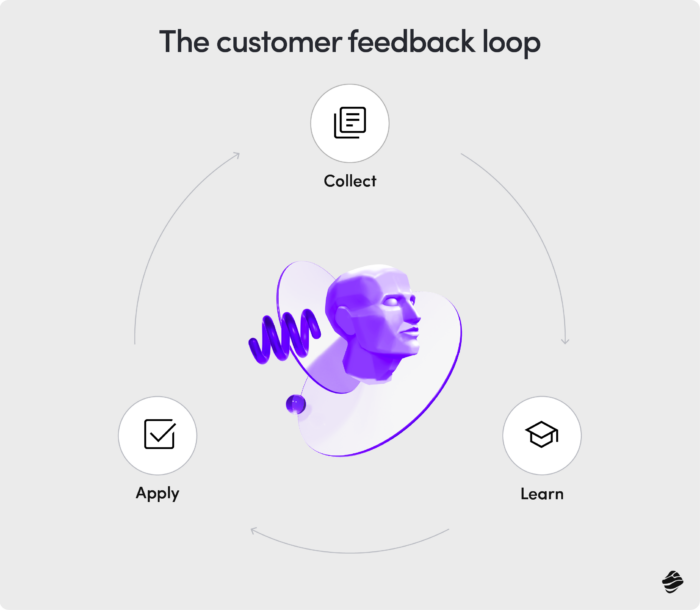
Partnering with a dedicated maintenance and support provider for software projects sourcing like Miquido can help mitigate these risks, ensuring your app remains competitive, secure, and reputable.
Future Trends in Mobile App Maintenance and Support
As we look toward the future of app maintenance and support, several emerging trends promise to redefine how we approach these critical tasks. Staying ahead of these trends will be key to ensuring your app remains competitive, secure, and aligned with user expectations.
The rise of predictive analytics
One of the most transformative trends is the integration of predictive analytics into app maintenance strategies. Predictive analytics uses historical data, machine learning, and AI algorithms to predict future events, allowing developers and support teams to anticipate and address potential issues before they impact users.
Here’s how predictive analytics is changing the game:
- Proactive problem solving: By analyzing app performance data, predictive models can identify patterns that may indicate a future failure or bug, enabling teams to fix these issues preemptively.
- Personalized user experiences: Predictive analytics can also tailor the user experience by anticipating user needs and preferences, leading to higher engagement and satisfaction.
- Optimized resource allocation: With insights into potential future issues, teams can better allocate their resources, focusing on areas that will have the most significant impact on app performance and user experience.
Automation in maintenance processes
Automation is revolutionizing maintenance, making processes like testing and deployment more efficient.
- Time-saving: Automate routine tasks, from testing to deployment, freeing up time for innovation and user experience enhancements.
- Consistency: Ensure consistent performance and reliability in maintenance and support.
AI-driven support systems
Artificial Intelligence (AI) is transforming app support with smarter, more responsive systems by enabling more efficient, personalized, and proactive support experiences.
- Instant assistance: Use AI-driven chatbots and virtual assistants for quick user support.
- Smarter support: Machine learning algorithms help identify and resolve common issues effectively.
Continuous integration and continuous deployment (CI/CD)
CI/CD practices are becoming increasingly prevalent, enabling faster and more reliable updates and maintenance.
- Automated processes: Reduce manual intervention in updates, minimizing errors.
- Latest features: Ensure users always have access to the latest features and fixes.
Emphasis on security and compliance
As cyber threats continue to evolve, security and compliance will remain a top priority in app maintenance. Emerging technologies and practices, such as blockchain for data integrity and automated compliance checks, will play a vital role in ensuring apps meet the highest security standards.
The emphasis on security and compliance in app maintenance is crucial for companies to protect against cyber threats and meet regulatory requirements. Here are examples of how companies are prioritizing this:
- Cloudflare is known for its strong security measures like fast CDN, strong Firewall, DDoS protection, and encryption techniques like TLS 1.3 and ChaCha20-Poly1305.
- Slack focuses on user privacy, log analysis, and push notifications to train users on secure practices.
- Apple has a strong focus on security and privacy, incorporating security into every facet of its business and differentiating itself from competitors with features like AppTrackingTransparency.
By embracing these future trends, app developers and maintenance teams can enhance their strategies, ensuring that their apps meet current standards and are also prepared for the challenges and opportunities of the future.
How to Choose the Right Maintenance and Support Partner for Your Needs
Choosing the right maintenance and support partner is crucial for the success of your digital product. The right partner can ensure your app remains competitive, secure, and aligned with user expectations.
Here are key criteria to consider and how Miquido meets these standards:
- Proven expertise and experience: Look for a partner with strong experience in software development in your industry or technology stack. A full portfolio of success stories is a huge green flag!
- Comprehensive service offering: Choose a partner that offers a full spectrum of mobile app development services that can address all your maintenance and support needs.
- Miquido provides 360° services, covering everything from ideation and design to development, maintenance, and support. This all-in-one approach ensures consistency and quality across all stages of your app’s lifecycle.
- Strong focus on security: Security expertise is non-negotiable. Your partner should have robust security measures in place.
- Commitment to innovation: Select a partner that stays ahead of technology trends and can offer innovative solutions.
- Flexibility and scalability: Your maintenance and support partner should be able to scale their services according to your needs.
- Miquido: Offers flexible and scalable solutions tailored to meet the unique requirements of each client. Whether you’re a startup or a large enterprise, we can adapt our services to customize your project’s scale and complexity.
- Excellent communication and support: Effective communication is key to a successful partnership. Your partner should be responsive and transparent.
- Positive client testimonials: Look for partners with positive feedback from previous clients.
Looking for Mobile App Maintenance and Support? Miquido Can Help
You’ve navigated the why and how of app maintenance and support, uncovering the pivotal role it plays in your app’s success. Now, you’re equipped with the knowledge to elevate your app, ensuring it remains a competitive, secure, and engaging experience for your users. Here’s a quick recap:
- Regular maintenance minimizes downtime and protects revenue.
- Security updates are crucial for user trust and compliance.
- Continuous improvement drives innovation and user satisfaction.
- Predictive analytics and emerging trends keep your app ahead.
- Choosing the right partner, like Miquido, ensures success.
As we wrap up, remember that the journey to a flawless app experience doesn’t have to be a solo road. If you’re looking for a complete team that goes above and beyond to ensure your app’s success, then our client-focused, innovative, and secure services are tailored to you.

